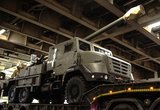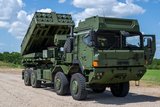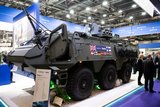BAE Systems announces new body armour contracts
BAE Systems has announced that it has recently received a number of contracts worth a combined $18 million that will see it supply additional hard body armour inserts to the US military.
The contracts include a $10.2 million order from the US Defense Logistics Agency for Enhanced Small Arms Protective Inserts (ESAPI); and an IDIQ contract award for up to $6 million from the US Department of Defense (DoD) for SPEAR BALCS inserts. Additionally the company will supply Enhanced Concealable Small Arms Protective Inserts to the US Marine Corps under a $500,000 research and development contract.
BAE Systems’ hard armour inserts are designed to be worn inside the fronts, backs, and sides of outer tactical vests, to provide advanced torso protection against a range of firearm threats on the battlefield. They are fully qualified by the US government through arduous and independent physical, environmental, and ballistic testing.
Ashoo Agarwal, quality engineer, BAE Systems, said: ‘The body armour is designed with the specific purpose of stopping armour-piercing bullets. Our team of engineers works hard to ensure every plate we make meets a rigorous set of requirements and standards. This commitment to quality helps protect warfighters around the world.’
To date, BAE Systems has produced more than 1.2 million hard body armour inserts, including ESAPI and other SAPI derivatives to the US military under various DoD contracts.
Related Equipment in Defence Insight
More from Land Warfare
-
![Lockheed Martin to look further afield for GMARS rocket system opportunities]()
Lockheed Martin to look further afield for GMARS rocket system opportunities
The HX truck is already in use in many NATO and allied countries around the world as a logistics vehicle and carrier for high-value systems, including missile firing weapons, so its use for the Global Mobile Artillery Rocket System makes logistical sense.
-
Medium knocked out of British Army LMP, with CAVS as heavyweight champion
As the British Army seeks to modernise and consolidate its diverse vehicle fleet, yet another change in direction is underway.
-
![Energy evolution: How laser defence systems are powering the next phase of air defence (podcast)]()
Energy evolution: How laser defence systems are powering the next phase of air defence (podcast)
Laser-based air defence is moving from promise to deployment as global threats evolve. In this special podcast, we explore how high-energy laser systems are reshaping interception strategies.
























